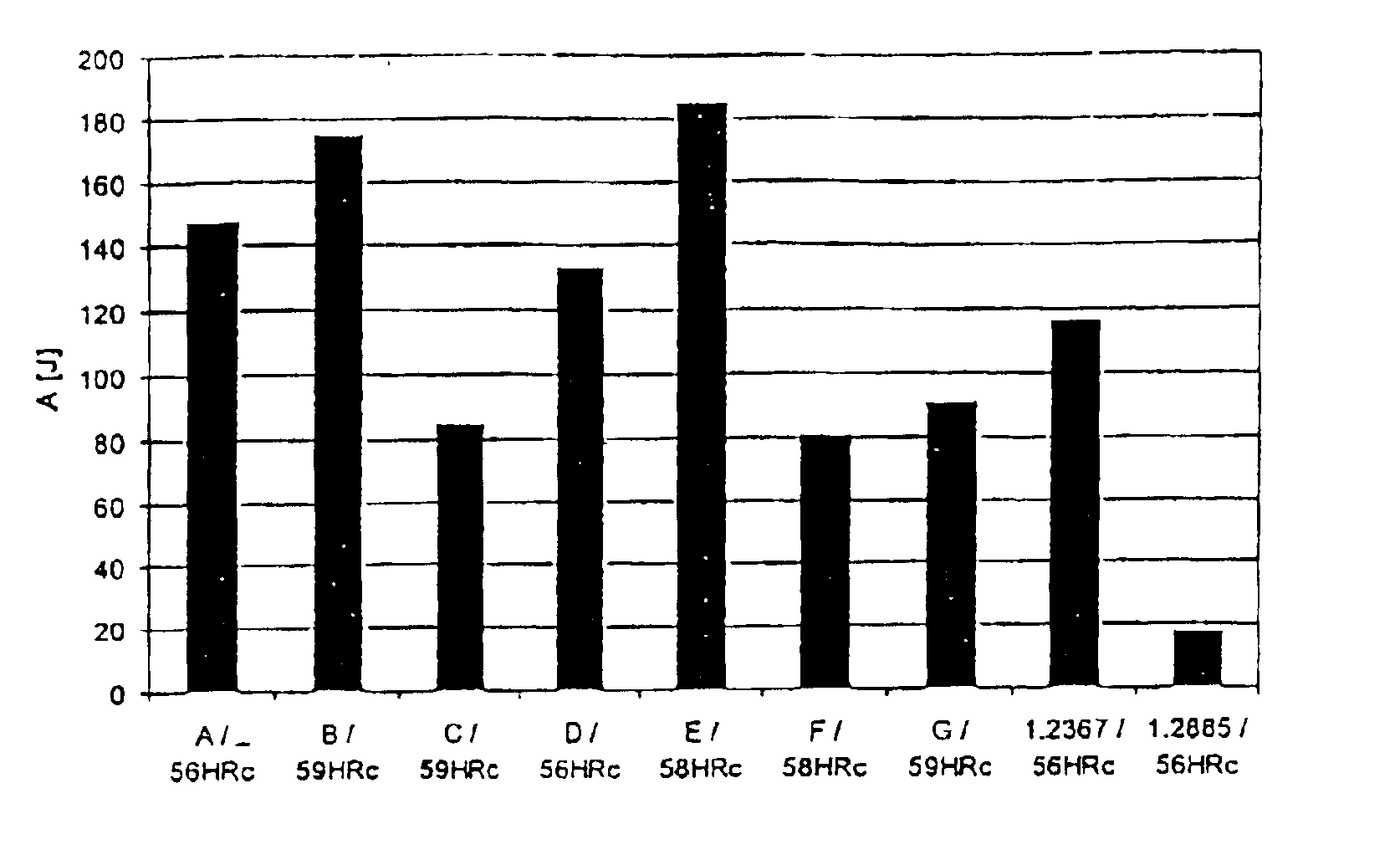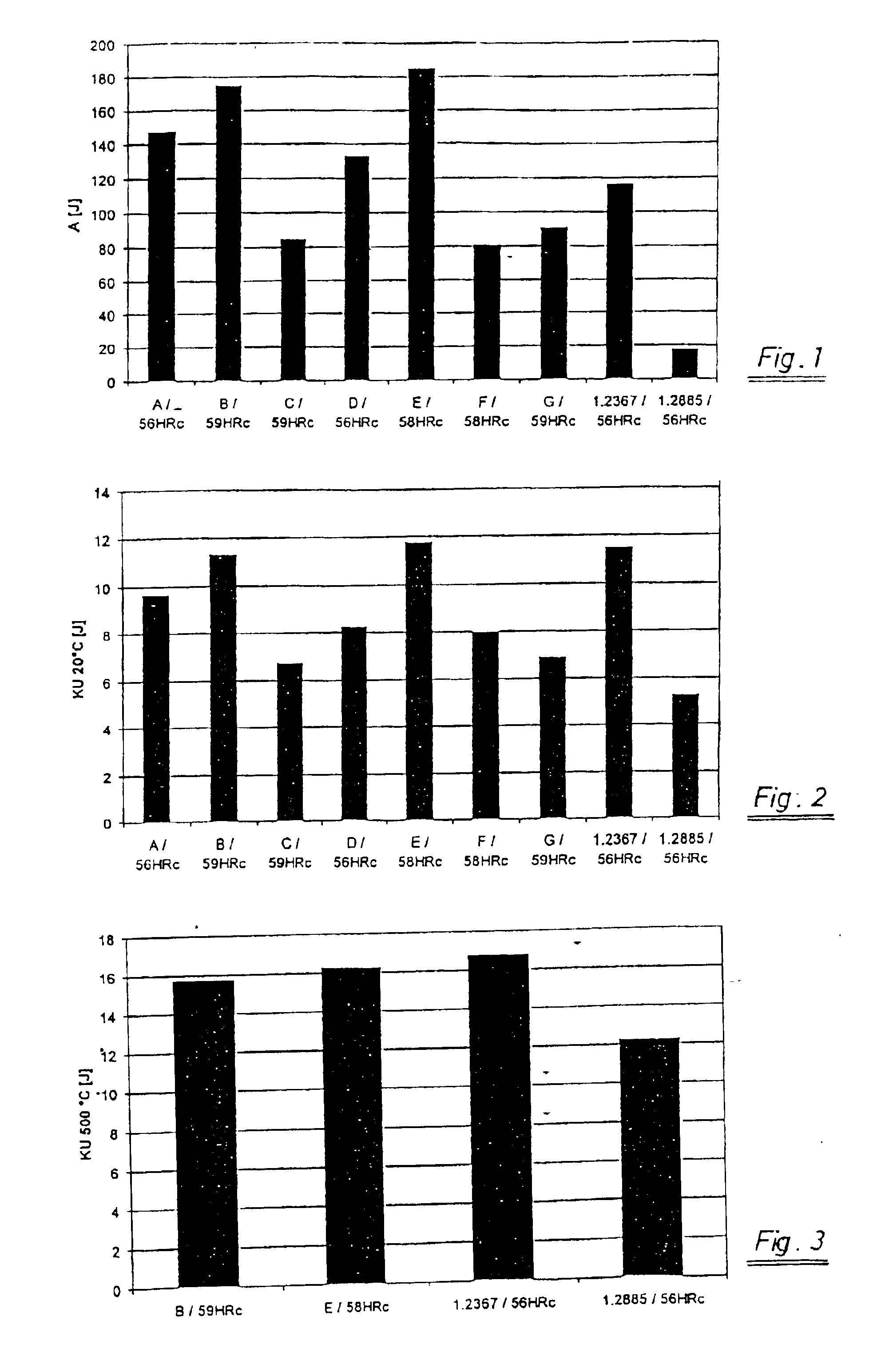Hot-working steel article
a technology of hot-working steel and articles, which is applied in the direction of heat treatment furnaces, furnace types, furnaces, etc., can solve the problems of high hardness and toughness of materials, low plastic deformation under extreme stress, and high wear resistance, and achieve the retention of hardness and good fatigue strength properties in the temperature range of above 550.degree. c. the effect of alloying technology methods
- Summary
- Abstract
- Description
- Claims
- Application Information
AI Technical Summary
Benefits of technology
Problems solved by technology
Method used
Image
Examples
Embodiment Construction
The particulars shown herein are by way of example and for purposes of illustrative discussion of the embodiments of the present invention only and are presented in the cause of providing what is believed to be the most useful and readily understood description of the principles and conceptual aspects of the present invention. In this regard, no attempt is made to show structural details of the present invention in more detail than is necessary for the fundamental understanding of the present invention, the description taken with the drawings making apparent to those skilled in the art how the several forms of the present invention may be embodied in practice.
Table 1 provides the chemical compositions of some tested materials.
The materials in Table 1 labeled alloy B and alloy E have a composition according to the invention; samples with the material numbers according to the "DIN-Stahl-Eisen-Liste" (Steel Iron List) are labeled 1.2367 and 1.2885, with the latter sample being outside ...
PUM
| Property | Measurement | Unit |
|---|---|---|
| temperature | aaaaa | aaaaa |
| temperature | aaaaa | aaaaa |
| temperature | aaaaa | aaaaa |
Abstract
Description
Claims
Application Information
 Login to View More
Login to View More - R&D
- Intellectual Property
- Life Sciences
- Materials
- Tech Scout
- Unparalleled Data Quality
- Higher Quality Content
- 60% Fewer Hallucinations
Browse by: Latest US Patents, China's latest patents, Technical Efficacy Thesaurus, Application Domain, Technology Topic, Popular Technical Reports.
© 2025 PatSnap. All rights reserved.Legal|Privacy policy|Modern Slavery Act Transparency Statement|Sitemap|About US| Contact US: help@patsnap.com


